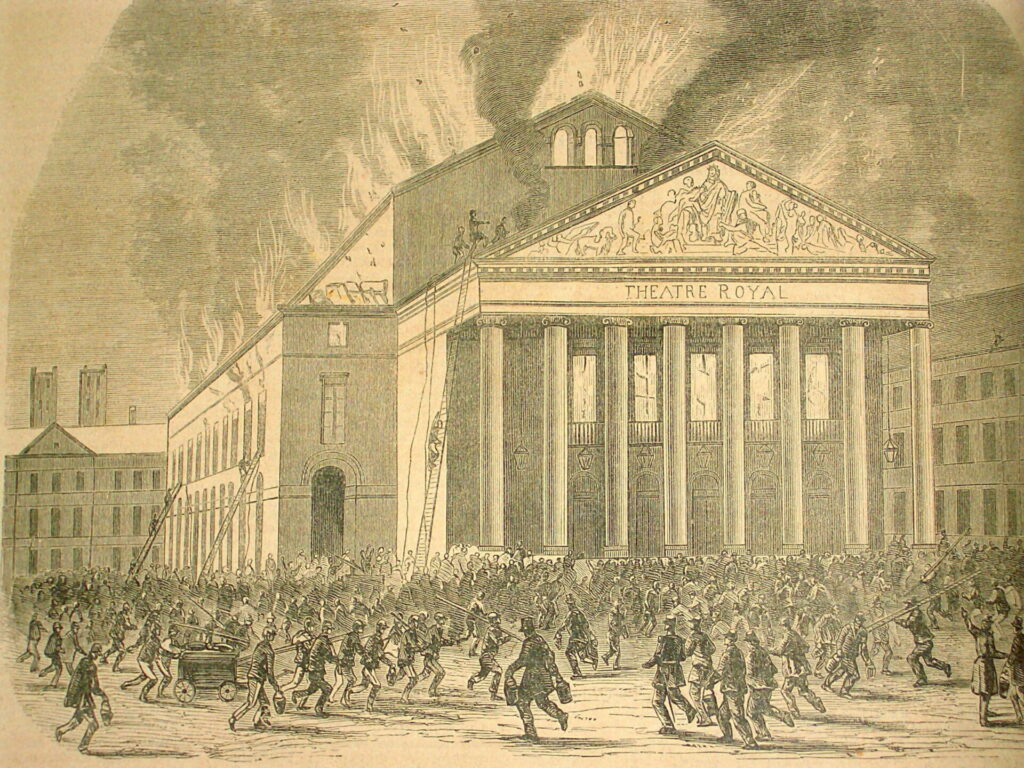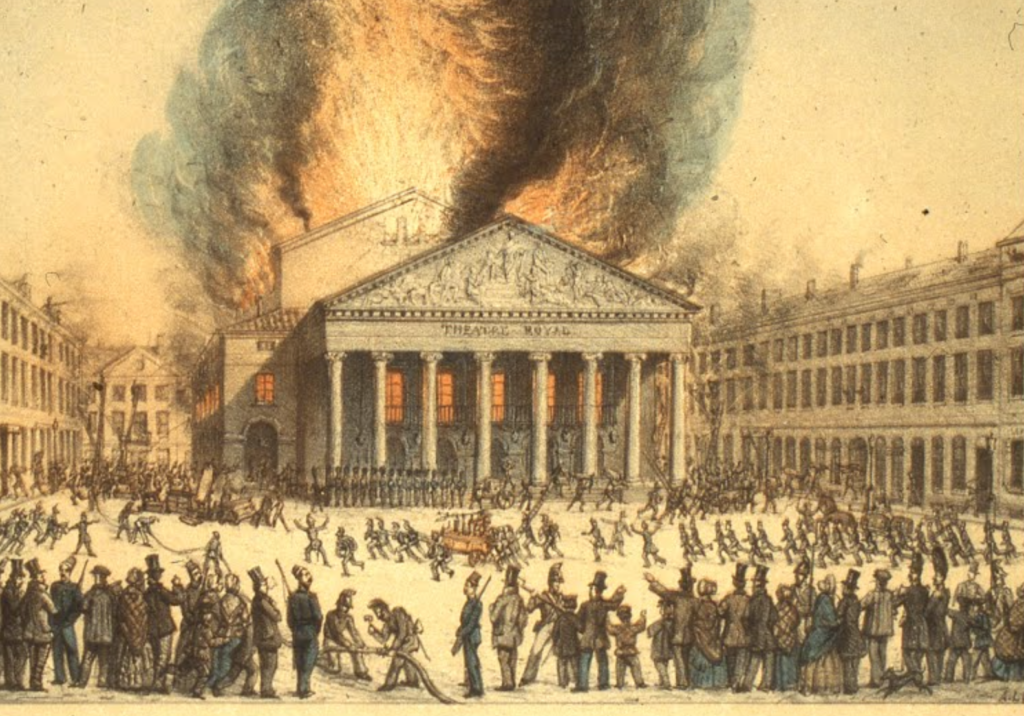On this day, 21 January 1855, the Théâtre de la Monnaie in Brussels was destroyed by a fire. One of the great attractions of the city was torn down by flames in a matter of minutes.
Designed by architects Paolo and Pietro Bezzi, the first 'Grand Théâtre de la Monnaie' was inaugurated in Brussels in 1700 on the site of the old Hôtel Ostrevent – an old coin mint which was destroyed in 1695 – and where the theatre's name 'La Monnaie' originates from.
Over one hundred years later, after Belgium had been annexed to France, Napoleon suggested, on a visit to Brussels, the construction of a new building.

The Théâtre de la Monnaie dating from 1700, by F. Narmon et M. Huisman. Credit: De la Muette au Sacre / Creative Commons
The first building, which stood on the present Place de la Monnaie was demolished, and a new 'Théâtre de la Monnaie' was inaugurated in 1819, on the site where it still stands today, just behind the old theatre. The new theatre was designed by the French architect Louis-Emmanuel Aimé-Damesne.
Tragedy strikes
On 21 January 1855, at around 9:00 in the morning, while the stagehands were setting up the scenery for Meyerbeer's play 'Le Prophète', a fire broke out on stage.
The building, which was mainly made of wood, was engulfed by flames in a matter of minutes and with great intensity.
The Illustrated London News reported at the time that, as soon as the fire brigade arrived, an "immense mass of red, green, and yellow flames burst from several parts of the roof, and rose in the air to height of upwards of hundred feet. The fire soon after found its way through the principal entrance, and the spectacle then was a terribly grand one."

Credit: L'Illustration-Journal Universel, 1855 / Creative Commons
The theatre was reduced to ash in less than two hours, civil and military authorities were also on the spot, but without being able to afford the slightest assistance.
Newspapers across Europe reported on the tragedy. "The city of Brussels suffered a great calamity in the destruction of the Theatre Royal de la Monnaie by fire. Nothing remains of this splendid erection but the bare and blackened walls," reported the Edinburgh News and Literary Chronicle on Saturday 27 January 1855.
According to the now-defunct L'Independence Belge newspaper in March 1855, the damage caused by the fire was estimated at 56,824 Belgian francs.
A particular irony was that the "handsome front" had only been completed the previous year. "This noble edifice, which was worthy of being an ornament to any city, has been destroyed just at the moment when it had been entirely completed," noted the Illustrated London News.
After the disaster, all that remained of the building were the four stone walls, the peristyle by Damesne (colonnades) and the pediment with a bas-relief by Eugène Simonis.

Reconstucted Monnaie Theatre, circa 1890-1900. Credit: Detroit Publishing Co / Creative Commons
The reconstruction of the theatre, both the interior decoration and the design of the building, was entrusted to leading architect Joseph Poelaert, who restored the building to its former glory.
A year later, on 28 March 1856, the new theatre opened its doors with a performance of Halévy's comic opera Jaguarita l'Indienne.
"Today in History" is a new historical series brought to you by The Brussels Times, aiming to take you on a trip down memory lane for newcomers and Belgians alike, written and compiled by Ugo Realfonzo (Editor). With thanks to the Belga News Agency.

